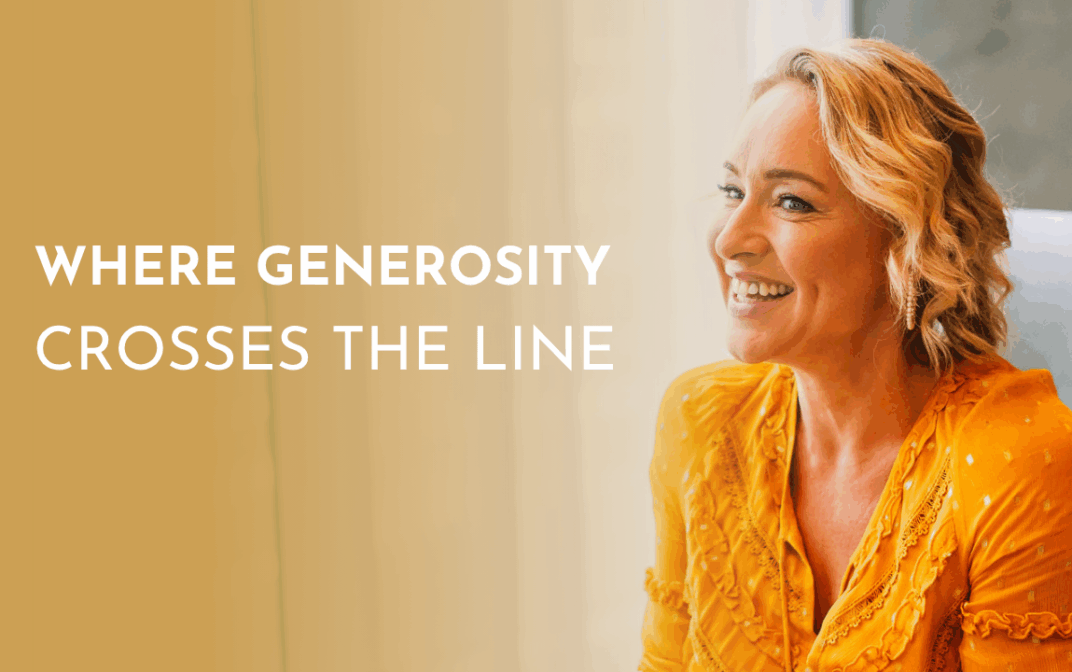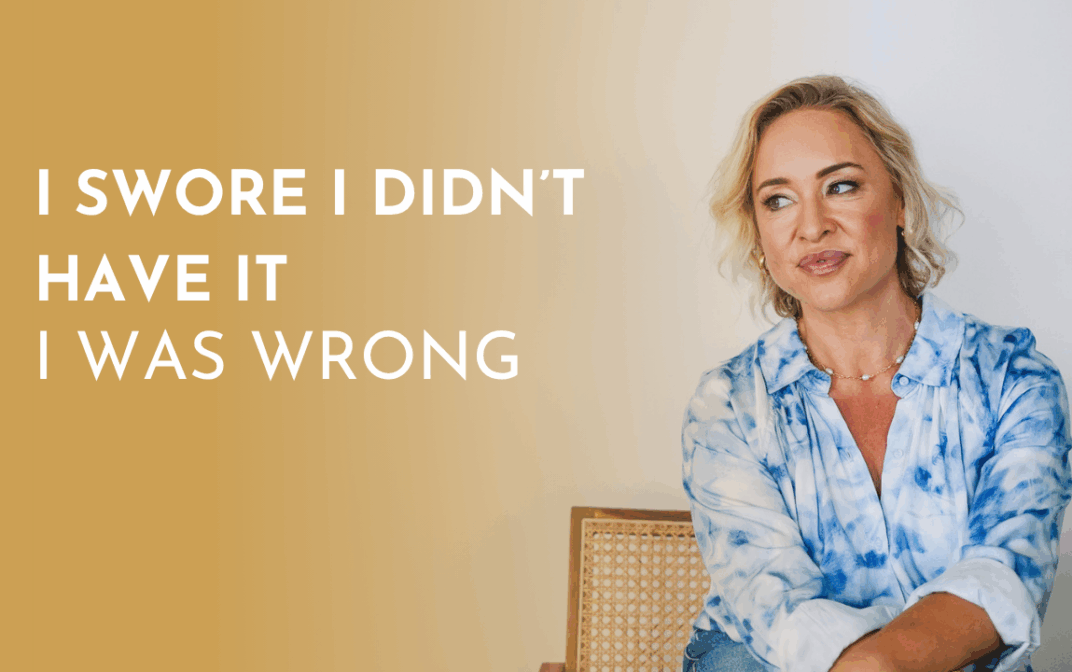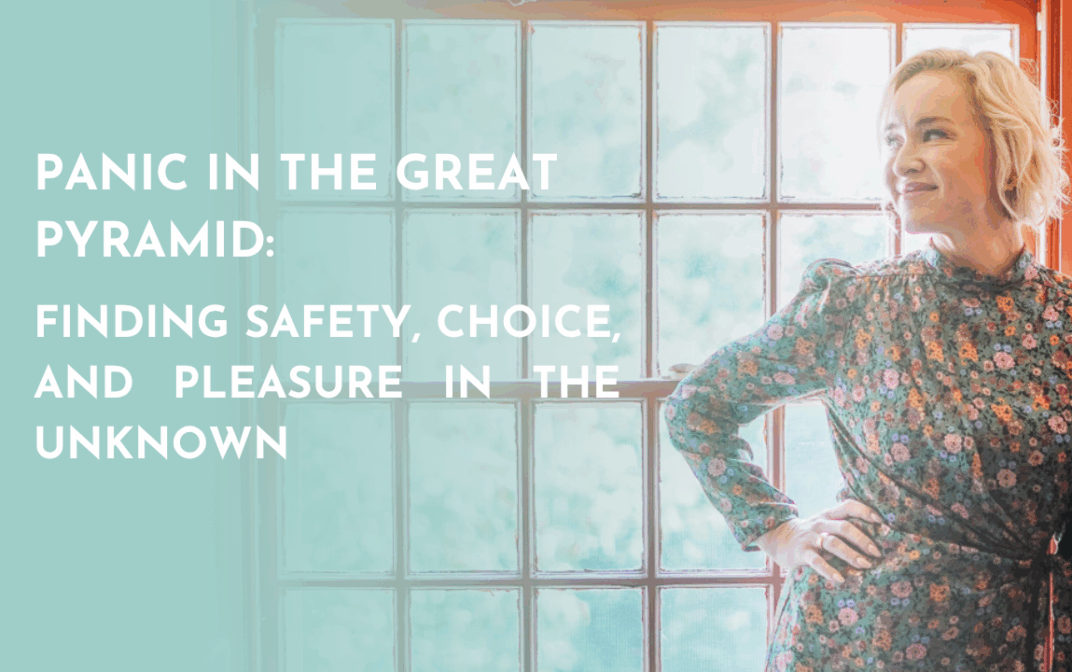How to Pay Off Debt Without Shame or Guilt
The email notification lights up your phone: “Payment Due.”
Your stomach drops. That familiar wave of nausea washes over you.
You know the amount. You know you’ll pay it. You always do.
But what comes with the payment is worse than the money leaving your account.
It’s the shame. The crushing, suffocating shame that whispers: “You shouldn’t have gotten into this mess. Everyone else has their life together. What’s wrong with you? You’ll never get ahead. You should have this figured out by now.”
You pay the bill, but the shame doesn’t go anywhere. It just sits there, heavy in your chest, reminding you that you’re behind, you’re failing, you’re not enough.
If this is your experience with debt, I need you to hear something:
Debt is not a moral failing. It’s not evidence that you’re lazy, irresponsible, or bad at life.
Debt is simply money you’ve already used – an invoice for blessings you’ve already received.
And it’s completely possible to pay off debt without the shame, guilt, and self-flagellation that most people think are required.
In fact, I’d argue that shame is the biggest obstacle to getting out of debt – not the amount you owe.
Let me show you a different way.
The Shame-Debt Spiral (And Why It Keeps You Stuck)
Here’s what most people don’t understand about debt and shame: Shame doesn’t motivate you to pay off debt faster. It actually keeps you stuck in the cycle.
Here’s how the shame-debt spiral works:
Step 1: You have debt. Maybe it’s student loans, credit cards, medical bills, or something else. The debt exists.
Step 2: You feel ashamed about the debt. You tell yourself stories: “I shouldn’t have bought that. I’m so irresponsible. I’ll never get out of this. Everyone else is doing better than me.”
Step 3: The shame triggers avoidance. Because looking at the debt feels so bad, you stop looking. You avoid your statements. You ignore payment reminders. You push it out of your mind.
Step 4: Avoidance makes the debt worse. While you’re avoiding, interest accrues. Late fees pile up. The problem gets bigger.
Step 5: You eventually look, see it’s worse, and the shame intensifies. “See? I knew I was terrible with money. This proves it.”
Step 6: The shame triggers coping behaviors. To numb the shame, you might spend more (retail therapy), overwork (hustle culture), or shut down entirely (depression).
Step 7: These behaviors often create more debt. The stress spending adds to credit cards. The shutdown means you miss opportunities to increase income.
Step 8: Return to Step 2, with more debt and more shame.
See the problem? Shame doesn’t help you pay off debt. It perpetuates debt.
This is why being “hard on yourself” about debt doesn’t work. Shame is not a motivator – it’s an accelerator of the very behaviors that created debt in the first place.
Why Shame Doesn’t Work (The Science)
Let’s talk about what’s actually happening in your brain when you try to “shame yourself” into paying off debt.
Shame activates your threat response. When you feel ashamed about your debt, your brain perceives it as a social threat (rejection, judgment, exclusion). This triggers your fight-flight-freeze response – the same response as physical danger.
Your prefrontal cortex goes offline. The part of your brain responsible for planning, decision-making, and rational thought literally shuts down when you’re in shame. This is why you “know” what you should do but can’t seem to do it.
Shame increases cortisol. This stress hormone makes you more impulsive, more likely to seek comfort (often through spending), and less able to regulate your emotions.
Shame isolates you. When you feel ashamed, you hide. You don’t talk about your debt. You don’t ask for help. You struggle alone, which makes everything harder.
Shame kills motivation. Research shows that shame-based motivation leads to short-term panic-driven action followed by longer-term avoidance and giving up. It’s not sustainable.
In contrast, self-compassion actually increases your ability to make positive changes.
Studies show that people who are kind to themselves about financial struggles:
- Are more likely to face their debt honestly
- Make better financial decisions
- Follow through on payment plans more consistently
- Experience less financial stress
- Build wealth more effectively over time
The irony? Being nice to yourself about debt actually helps you pay it off faster.
The Debt Shame Stories You’ve Been Told (And Why They’re Lies)
Before we can release the shame, we need to dismantle the lies you’ve been told about debt.
Lie #1: “If you have debt, it means you’re bad with money.”
The Truth: Debt is a tool. Like any tool, it can be used wisely or unwisely, but having it doesn’t make you inherently “bad” at anything.
Most successful people have had debt at some point – student loans, mortgages, business loans. The wealthiest people in the world use debt strategically (it’s called leverage).
Context matters. A mortgage that allows you to build equity? That’s different from credit card debt from emotional spending. Student loans that increased your earning potential? Different from medical debt you had no control over.
You are not bad with money because you have debt. You are a human living in a capitalist economy where debt is often necessary or useful.
Lie #2: “You should have known better.”
The Truth: You made the best decisions you could with the information, resources, and nervous system capacity you had at the time.
Maybe you were never taught about money. Maybe you were in survival mode. Maybe you had an emergency. Maybe you were young and didn’t understand interest rates. Maybe you were manipulated by predatory lending.
Past you did what past you needed to do. Present you gets to make different choices without punishing past you.
Lie #3: “Everyone else has it together except you.”
The Truth: Most people have debt, and many are hiding it just like you are.
According to recent data:
- 77% of American households have some form of debt
- The average American has over $90,000 in debt
- Credit card debt alone averages around $6,000 per person
- Student loan debt affects 43 million Americans
You are not alone. You are not the only one struggling. Everyone else isn’t doing better – they’re just better at hiding it.
Lie #4: “Debt means you’re a failure.”
The Truth: Debt means you’re a human who lives in a society where education costs hundreds of thousands of dollars, healthcare can bankrupt you, wages haven’t kept up with costs, and emergencies happen.
The existence of your debt may say more about systemic failures than personal ones.
Lie #5: “You have to suffer to pay off debt.”
The Truth: Suffering doesn’t pay off debt. Strategy, consistency, and self-compassion do.
You don’t have to punish yourself. You don’t have to live on rice and beans. You don’t have to deny yourself every pleasure.
In fact, sustainable debt payoff requires taking care of yourself so you have the resilience to stick with the plan.
Lie #6: “You don’t deserve nice things until the debt is gone.”
The Truth: You are worthy of joy, beauty, and pleasure regardless of your debt status.
Deprivation makes you resentful. Resentment leads to rebellion. Rebellion leads to spending. Spending increases debt.
Allowing yourself small pleasures actually helps you stay consistent with your larger financial goals.
What Debt Actually Is (A Radical Reframe)
Okay, so if debt isn’t a moral failing, what is it?
I want to offer you a completely different way of thinking about debt that has transformed how thousands of my students relate to what they owe.
Debt is an Invoice for Blessings Already Received.
I call them IBARs instead of “debts.”
Why? Because the language we use shapes how we feel, and how we feel determines our actions.
Think about it:
That student loan debt? It’s an invoice for the education that expanded your mind, the friendships that enriched your life, the credentials that opened doors.
That medical debt? It’s an invoice for the care that kept you alive, the treatment that eased your pain, the expertise that healed you.
That credit card debt? It’s an invoice for the time you got through a hard season, the comfort you needed, the emergency you handled, the experiences you had.
Even debt from “mistakes”? It’s an invoice for the lessons you learned, the growth that came from struggle, the person you became through that experience.
Every dollar of debt represents something you already received.
When you shift from “I have debt” (shame) to “I have invoices for blessings already received” (gratitude), everything changes.
Suddenly, you’re not punishing yourself for being bad. You’re honoring commitments you made for things that served you.
That energy is completely different. And that energy is what allows you to pay it off from a place of empowerment instead of shame.
The Debt Alchemy Process: From Shame to Empowerment
So how do you actually release the shame and transform your relationship with debt?
This is the exact process I walk my students through, and it works.
Step 1: The Debt Acknowledgment
You can’t heal what you won’t look at.
Your assignment: Create a complete list of all your debts (IBARs). Include:
- Who you owe
- How much you owe
- The interest rate
- The minimum payment
- What this debt paid for (this is important!)
Example:
- Student Loan, $32,000, 5%, $350/month, Paid for: My degree, lifelong friendships, the career I now have
What this does: Looking at your debt directly – all of it, in one place – is terrifying. But it’s also incredibly freeing. The not-knowing is often worse than the knowing.
And when you write what the debt paid for, you’re already beginning to shift out of shame and into acknowledgment of what you received.
Step 2: The Shame Release Ritual
Shame lives in your body, not just your thoughts. You need a somatic practice to release it.
Your assignment: Find a quiet space. Put your hand on your heart.
For each debt, say out loud:
“I acknowledge that I owe [amount] for [what it paid for]. I release any shame I’m carrying about this. I honor that I needed/wanted this at the time. I’m ready to pay this invoice with love and appreciation for what I received. I forgive myself for any judgment I’ve held. I am not my debt. I am worthy regardless of this number.”
Then physically release: shake your body, take deep breaths, or write the shame on paper and tear it up.
What this does: This ritual interrupts the shame loop. You’re acknowledging the debt (not avoiding), appreciating what it gave you (not judging), and physically releasing the emotional charge.
Step 3: The Truth-Telling
Shame thrives in secrecy. Light dissolves it.
Your assignment: Tell one safe person the full truth about your debt.
Choose someone who won’t judge you – a trusted friend, a therapist, a financial coach, a supportive family member.
Say: “I have [amount] in debt, and I’ve been carrying shame about it. I’m working on releasing that shame and making a plan to pay it off. I’m telling you because I don’t want to hide anymore.”
What this does: When you speak your shame out loud to someone who responds with compassion instead of judgment, the shame loses its power. You discover you can be known and loved anyway.
Step 4: The Gratitude Practice
This might feel counter-intuitive, but stay with me.
Your assignment: Every time you make a debt payment, practice gratitude.
Before you send the payment, take a breath and say:
“Thank you for [what this debt paid for]. I’m grateful I had access to this when I needed it. I honor this invoice by paying it with love.”
Then make the payment.
What this does: This transforms the energy of debt payment from punishment to appreciation. You’re not beating yourself up – you’re honoring commitments you made to yourself.
And when payments feel like acts of integrity rather than shame, you’re much more likely to stay consistent.
Step 5: The Celebration
Every single debt payment – no matter how small – deserves celebration.
Your assignment: Create a debt payoff tracker (visual, in a journal, on your wall – wherever you’ll see it).
Every time you make a payment:
- Color in the progress on your tracker
- Text a friend: “Just paid $X toward my debt!”
- Do a literal happy dance
- Put a gold star on your calendar
- Journal about how good it feels to follow through
What this does: Celebration creates positive associations with debt payoff. Your brain learns: “Paying off debt = good feelings.” This motivates continued action far more effectively than shame ever could.
The Strategic Side: How to Actually Pay It Off
Okay, so you’ve released the shame. Now let’s talk strategy.
Because here’s the thing: Shame-free doesn’t mean strategy-free.
Love and gratitude are beautiful, but you also need a clear plan.
Strategy 1: Know Your Numbers
From your debt acknowledgment list, calculate:
Total debt amount: All IBARs combined
Weighted average interest rate: (Total annual interest you pay ÷ Total debt) × 100
Debt-to-income ratio: (Total monthly debt payments ÷ Monthly gross income) × 100
Payoff timeline at current pace: How long until you’re debt-free if you only make minimum payments?
These numbers aren’t meant to shame you – they’re information that helps you make a plan.
Strategy 2: Choose Your Payoff Method
There are two mainstream approaches, but I came up with a third that I love. Choose based on what motivates you:
The Debt Snowball (Emotional Win Method):
- List debts from smallest to largest balance (ignore interest rates)
- Make minimum payments on everything
- Put all extra money toward the smallest debt
- When it’s paid off, roll that payment into the next smallest
- Repeat until debt-free
Pros: Quick wins build momentum and motivation
Best for: People who need emotional encouragement
The Debt Avalanche (Math-Optimized Method):
- List debts from highest to lowest interest rate
- Make minimum payments on everything
- Put all extra money toward the highest interest debt
- When it’s paid off, roll that payment into the next highest
- Repeat until debt-free
Pros: Saves the most money on interest
Best for: People motivated by efficiency and numbers
The Emotional Weight (Energetic Win Method):
- List debts from highest to lowest level of emotional weight (e.g. if you have a loan from your parents you feel guilty about every time you think about it, even if there’s no interest, that has a higher emotional weight than your Mastercard bill)
- Make minimum payments on everything
- Put all extra money toward the highest emotional weight debt
- When it’s paid off, roll that payment into the next highest
- Repeat until debt-free
Pros: Frees up your emotional bandwidth the fastest
Best for: People who are deeply relational, sensitive, and emotionally driven
My recommendation: Use the Emotional Weight Method if you’re carrying shame and need emotional wins. Use the Avalanche if you’re regulated and motivated by optimization.
There’s no “right” answer – only what keeps you motivated.
Strategy 3: Find Money to Accelerate Payoff
You can’t just “budget harder” your way out of debt. You need to either increase income or decrease expenses (or both).
To decrease expenses:
- Audit subscriptions (cancel what you don’t use)
- Negotiate bills (insurance, internet, phone)
- Reduce one category that doesn’t align with your values
- Challenge yourself to a “no-spend” week each month on a specific category
To increase income:
- Ask for a raise or raise your rates
- Take on freelance work temporarily
- Sell things you don’t use
- Turn a hobby into side income
- Look for higher-paying job opportunities
- Look for ways to increase your revenue if you have a business
But remember: This isn’t about deprivation. It’s about temporary intensity in service of long-term freedom.
You get to decide how aggressive you want to be. There’s no moral superiority in paying off debt in 1 year vs. 5 years.
Strategy 4: Automate Everything
Willpower is finite. Automation is infinite.
Set up automatic payments for:
- Minimum payments on all debts (so you never miss one)
- Your chosen extra payment amount on your focus debt
- A small amount to savings (yes, even while paying off debt – you need a buffer)
Why this works: Automation removes decision fatigue. You don’t have to “be motivated” every month. The payment just happens.
And when payments are automatic, you can’t talk yourself out of them during weak moments.
Strategy 5: Create a Spending Plan That Includes Joy
This is where most debt payoff plans fail: They’re so restrictive that they’re unsustainable.
Your spending plan should include:
- Basic needs (housing, food, utilities, transportation)
- Debt payments (your focus debt + minimums on others)
- Small cushion buffer (work up to 2 months of expenses)
- JOY MONEY (yes, really)
Allocate at least $50-100/month (adjust to your situation) for things that bring you joy. This is not optional.
Coffee with friends, a book you want to read, flowers for your table, a nice meal out – whatever fills your cup.
Why this matters: Joy money prevents the resentment and rebellion that lead to spending binges. It honors that you’re a human who needs pleasure, not just a debt-paying machine.
Strategy 6: The Progress Check-In
Every 90 days, review your progress:
- How much have you paid off?
- What’s working well?
- What needs adjusting?
- How do you feel about your progress?
- What support do you need?
Celebrate what’s working. Adjust what’s not. Be curious, not critical.
When Debt Payoff Gets Hard (Because It Will)
Let’s be real: Even with the best plan and zero shame, debt payoff is challenging.
Here’s how to handle the inevitable difficulties:
When you want to give up:
Remember your “why.” Why do you want to be debt-free?
Write it down where you’ll see it:
- “So I can sleep without anxiety”
- “So I can travel without guilt”
- “So I can give generously”
- “So I can break this cycle for my kids”
- “So I can feel proud of myself”
Your why is your anchor when motivation fades.
When you have an unexpected expense:
This is not failure. This is life.
Use your cushion buffer if you have one. If not, it’s okay to slow debt payoff temporarily to handle the emergency.
Get back on track next month. One setback doesn’t erase all your progress.
When you’re tired of “being good”:
You don’t have to be “good.” You have to be consistent.
Use your joy money guilt-free. Take a month where you only make minimums if you need a break. Rest is not regression.
When someone judges you:
Their judgment is their issue, not yours. You don’t owe anyone an explanation for your financial journey.
Protect your energy by not discussing your debt with people who can’t be supportive.
When you compare yourself to others:
Their timeline is not your timeline. Their circumstances are not your circumstances.
The only comparison that matters is you now vs. you a month ago. Are you making progress? Then you’re succeeding.
When shame tries to come back:
Because it will. Shame is sticky.
Return to the Debt Alchemy Process. Place your hand on your heart. Say your forgiveness statement again.
Shame is just a feeling. It’s not the truth. It will pass if you don’t feed it.
The Debt-Free Vision (What You’re Working Toward)
I want you to imagine what life feels like when the debt is gone:
You check your bank balance and all the money is actually yours.
You make financial decisions based on what you want, not what you owe.
You sleep through the night without money anxiety waking you at 3 AM.
You see something you want and you can simply buy it – no guilt, no calculation of which credit card has room.
You can be spontaneous because you’re not constantly running mental math about what you can afford.
You contribute to causes you care about generously.
You invest in your future with confidence.
You tell people what you do for work without the background worry of “but I’m drowning in debt.”
This is what you’re working toward.
Not to prove you’re worthy (you already are).
Not to earn your value (you already have it).
But to experience the freedom, peace, and possibility that come with financial liberation.
What Becomes Possible
When you pay off debt without shame – with love, strategy, and self-compassion – something magical happens:
You don’t just become debt-free. You become free, period.
Because the process of releasing shame, honoring yourself, and following through on commitments transforms you.
You learn:
- That you’re capable of hard things
- That you can trust yourself to keep promises
- That you’re worthy of love even in the messy middle
- That you can change patterns that have been with you for years
- That financial empowerment is yours to claim
The debt payoff becomes a spiritual practice. A self-love practice. A proving ground for your own resilience.
And when you get to the other side, you’re not just debt-free – you’re different. Stronger. More confident. More yourself.
That transformation is worth more than the dollars you’ll save on interest.
Your Debt Freedom Journey Starts Now
You don’t have to carry the shame anymore.
You don’t have to beat yourself up.
You don’t have to do this perfectly.
You just have to start – with compassion, with strategy, and with the deep knowing that you are worthy of financial freedom.
The debt doesn’t define you.
Your past doesn’t define you.
What defines you is what you choose to do from this moment forward.
And I’m here to tell you: You can do this.
Not because you have to earn your worth by paying off debt.
But because you’re ready to step into the freedom that’s waiting for you on the other side.
Take a deep breath.
Place your hand on your heart.
And begin.
Start Your Debt Freedom Journey Today
Ready to pay off your debt with love, strategy, and zero shame?
The Money Reset is a free audio journey that will help you transform your relationship with debt and create a path forward without the guilt.
Inside this audio experience, you’ll discover:
- Why managing money feels so stressful (even when you’re trying to do the “right” things)
- How to stop the shame-avoidance cycle that keeps you stuck
- How to start building wealth that doesn’t feel forced
- The framework for creating lasting change with your money
This isn’t about beating yourself up or depriving yourself to pay off debt faster.
It’s about healing your relationship with money so you can actually follow through.
Because debt payoff fueled by shame keeps you stuck.
But debt payoff fueled by self-compassion sets you free.
Kate Northrup is the bestselling author of Money: A Love Story and Do Less. After paying off her own debt using the principles she teaches—including the radical reframe of “Invoices for Blessings Already Received”—she’s helped thousands of students become debt-free without the shame, guilt, and deprivation that traditional methods require.






0 comments